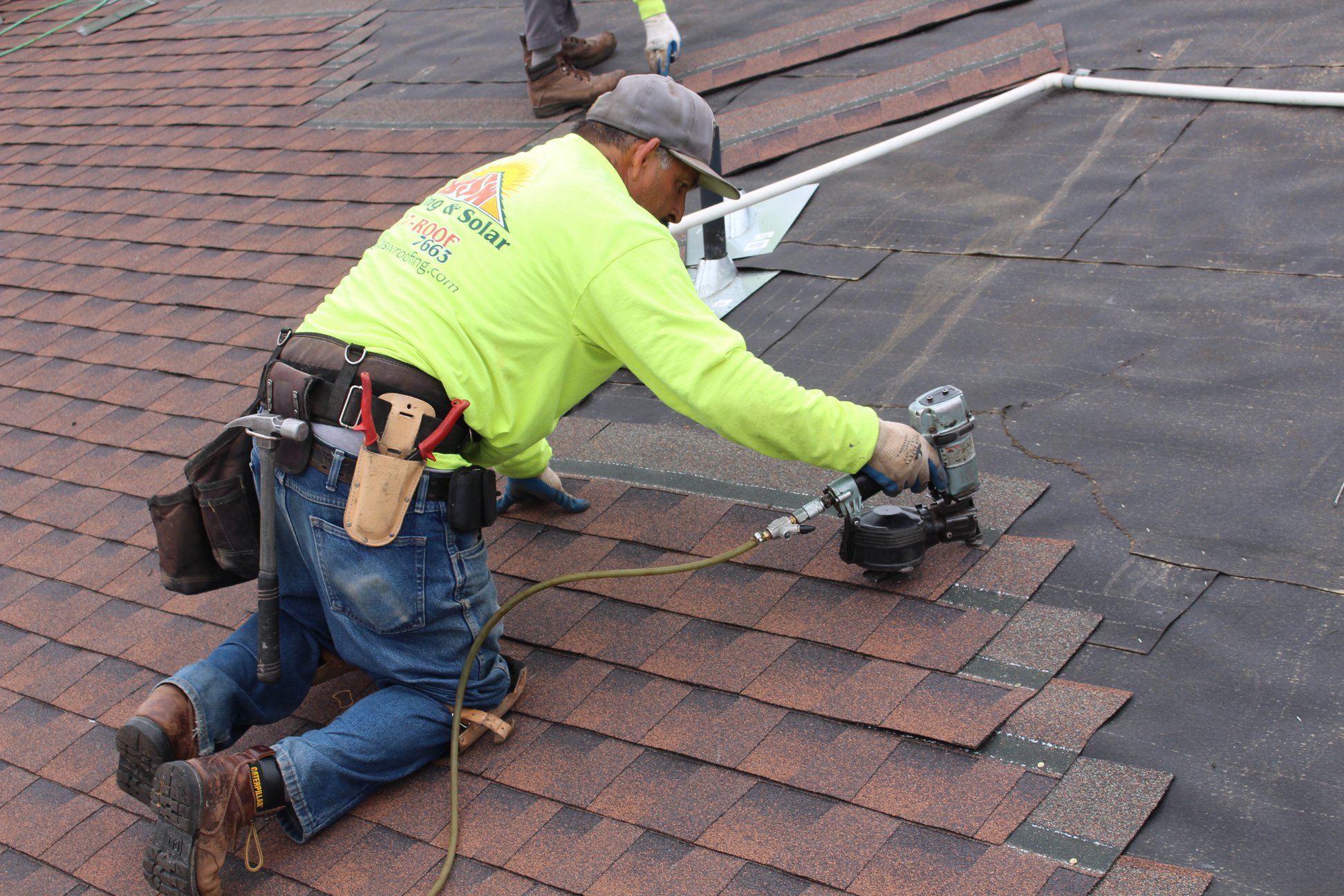The Value of Selecting Knowledgeable Roofing Companies Gainesville Florida
The Value of Selecting Knowledgeable Roofing Companies Gainesville Florida
Blog Article
Best Practices for Ensuring Correct Roofing Air Flow
A balanced consumption and exhaust air vent ratio, generally 1:300, plays a pivotal duty, with consumption vents ideally positioned at the reduced side of the roofing for cool air entrance and exhaust vents at the peak for cozy air leave. Keeping insulation away from vents is important to avoid airflow limitation.
Understand Air Flow Essentials
Appropriately understanding ventilation essentials is important for making sure the long life and performance of roof. Effective ventilation mitigates moisture accumulation and temperature extremes in the attic room, both of which can lead to significant architectural damages in time. A well-ventilated roof covering aids in protecting against usual issues such as mold and mildew development, timber rot, and ice dams, which can endanger the integrity of the roofing products and the underlying structures.
The main goal of ventilation is to assist in the motion of air, enabling a constant exchange between the indoor and exterior environments. This equilibrium is accomplished through a combination of consumption and exhaust vents that work together to maintain ideal air flow. Intake vents, normally located along the eaves or soffits, enable fresh air to enter the attic room space, while exhaust vents, frequently positioned at or near the roofing ridge, allow warm, damp air to escape.
Secret elements influencing the efficiency of roof air flow consist of appropriate positioning, adequate sizing, and making certain that both consumption and exhaust vents are unblocked. Routine examination and upkeep are important to recognize possible obstructions, damage, or inadequacies in the ventilation system, therefore securing the roof's performance and durability.
Kinds Of Roof Vents
Roof covering vents play a critical duty in keeping efficient attic room air flow and, by expansion, the general health and wellness of the roof. Various kinds of roof covering vents are readily available, each with distinct advantages customized to specific roof needs. Ridge vents, for example, are mounted along the roof's top, allowing warm, damp air to get away from the attic. They provide continual air flow and blend effortlessly with the roofline, making them both effective and cosmetically pleasing.

Soffit vents are set up under the eaves and operate in tandem with roof covering vents to guarantee a well balanced consumption and exhaust system. By permitting cooler air to go into from below, soffit vents promote the expulsion of warm air through upper vents. Gable vents, located on the exterior walls of the attic room, deal one more reliable remedy, specifically in homes with saddleback roofs.
Assess Your Current Ventilation

Following, consider the age and problem of your roof products and ventilation elements. Older systems may not abide by current building ordinance or might have degraded over time, decreasing their efficiency. Conduct a thorough assessment to recognize any indicators of damage, such as corrosion, damage, or voids that could endanger the system's efficiency.
Furthermore, gauge the attic temperature and humidity levels. High temperatures and moisture can suggest poor ventilation.
Installation Best Practices
Reliable installation of roofing ventilation systems is vital for making certain optimal performance and longevity. Correct installment begins with comprehending the specific ventilation requirements of the roof covering and the structure it covers. This includes computing the correct ratio of intake to tire vents, anonymous usually sticking to the 1:300 policy, which specifies one square foot of air flow for every 300 square feet of attic floor space.

The positioning of vents is just as vital. Consumption vents must be installed at the roof's reduced edge, usually in the soffits, to enable cool air to enter. Exhaust vents, on the other hand, ought to be installed near or at the roof covering's top to help with the departure of cozy, moist air. This produces an all-natural air flow that helps preserve temperature and moisture balance within the attic Get the facts room space.
Seal all air vent links meticulously to stop air leakages and potential water infiltration. Use top quality products and follow maker guidelines to make sure durability and effectiveness. Additionally, incorporating ridge vents with baffles can considerably boost air flow effectiveness by preventing wind-driven rainfall and snow from going into the attic room.
Eventually, exact installation of roof air flow systems alleviates possible problems such as mold development, ice dams, and structural damage, ensuring the roofing system's integrity and the structure's total health and wellness.
Routine Maintenance Tips
Uniformity in upkeep methods is essential to guaranteeing the lasting performance of roof ventilation systems. Regular examinations are critical, preferably carried out biannually-- in the springtime and fall. During these evaluations, make sure that vents are without debris, nests, and various other blockages that might hinder air movement. Look for any signs of dampness buildup or mold and mildew, as these can suggest improper ventilation or leakages (roofing companies in gainesville florida).
Make use of a soft brush or a vacuum to remove dust and particles from consumption and exhaust vents. Be mindful not to harm the air vent screens or louvers throughout the process.
Correct insulation is equally vital. Ensure that attic insulation does not obstruct the vents, as this can seriously limit air flow. Reposition or replace it to maintain an efficient obstacle. if any type of insulation has actually shifted or worked out.
Finally, replace any type of damaged or missing out on parts promptly. Broken vents, broken shingles, or shabby flashing can all add to poor ventilation and must be addressed immediately. Normal upkeep guarantees that the roof ventilation system functions efficiently, thereby expanding the lifespan of the roof covering itself.
Conclusion
Making certain proper roof air flow is extremely important for preserving the performance and durability of a roof system. Adherence to the 1:300 consumption and exhaust vent ratio, paired with the calculated positioning of vents, is crucial.
A well balanced consumption and exhaust air vent proportion, commonly 1:300, plays an essential role, with intake vents preferably placed at the lower edge of the roof for amazing air entrance and exhaust vents at the peak for cozy air departure. Intake vents, normally located along the eaves or soffits, enable fresh air to enter the attic area, while exhaust vents, often located at or near the roofing system additional hints ridge, make it possible for hot, moist air to leave.
Soffit vents are installed under the eaves and job in tandem with roofing vents to ensure a well balanced consumption and exhaust system. By permitting cooler air to get in from below, soffit vents facilitate the expulsion of warm air via top vents. Adherence to the 1:300 intake and exhaust vent ratio, paired with the critical positioning of vents, is essential.
Report this page